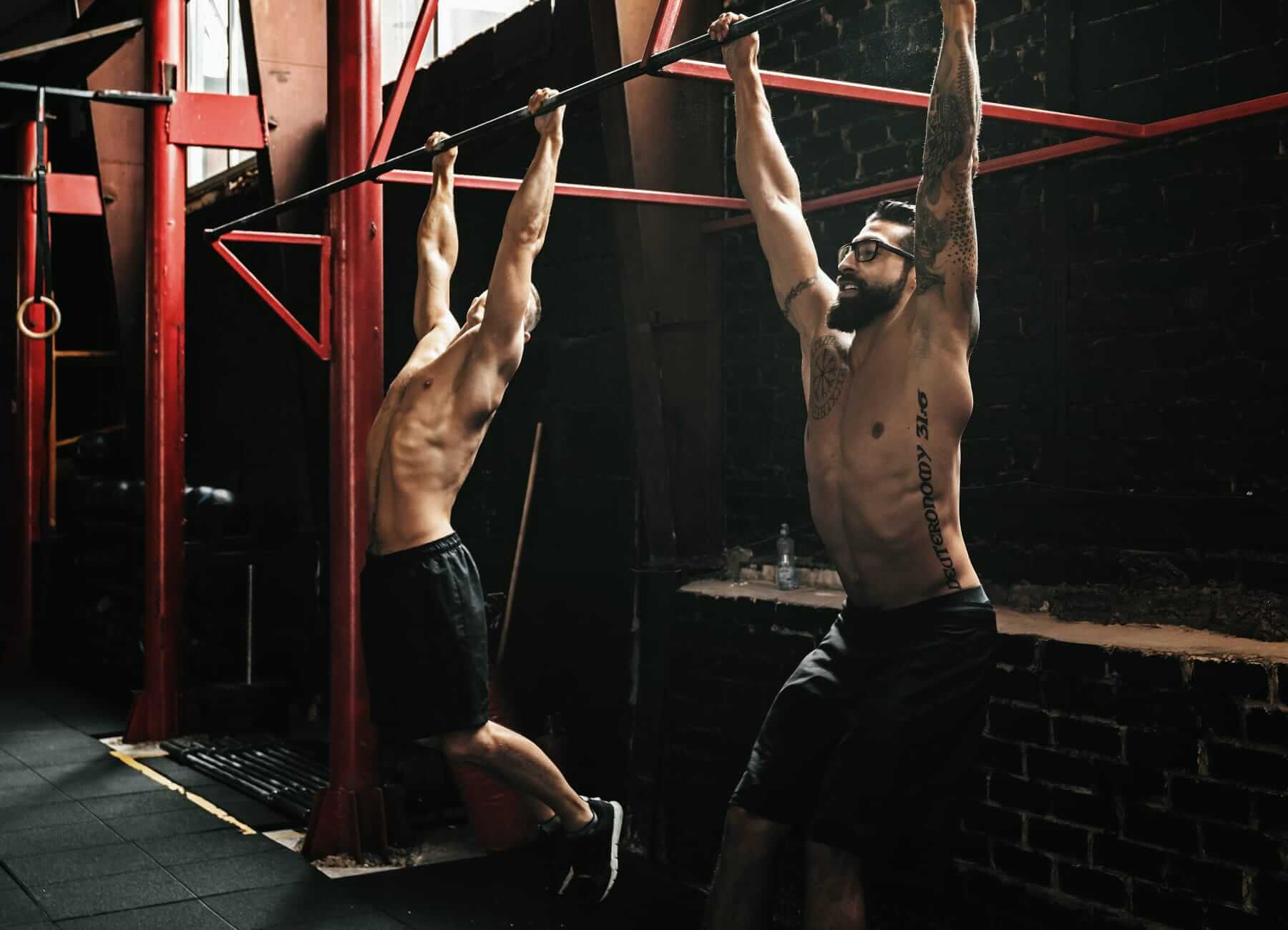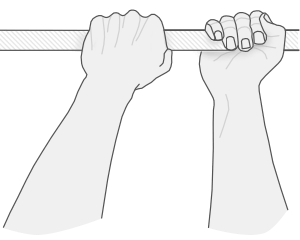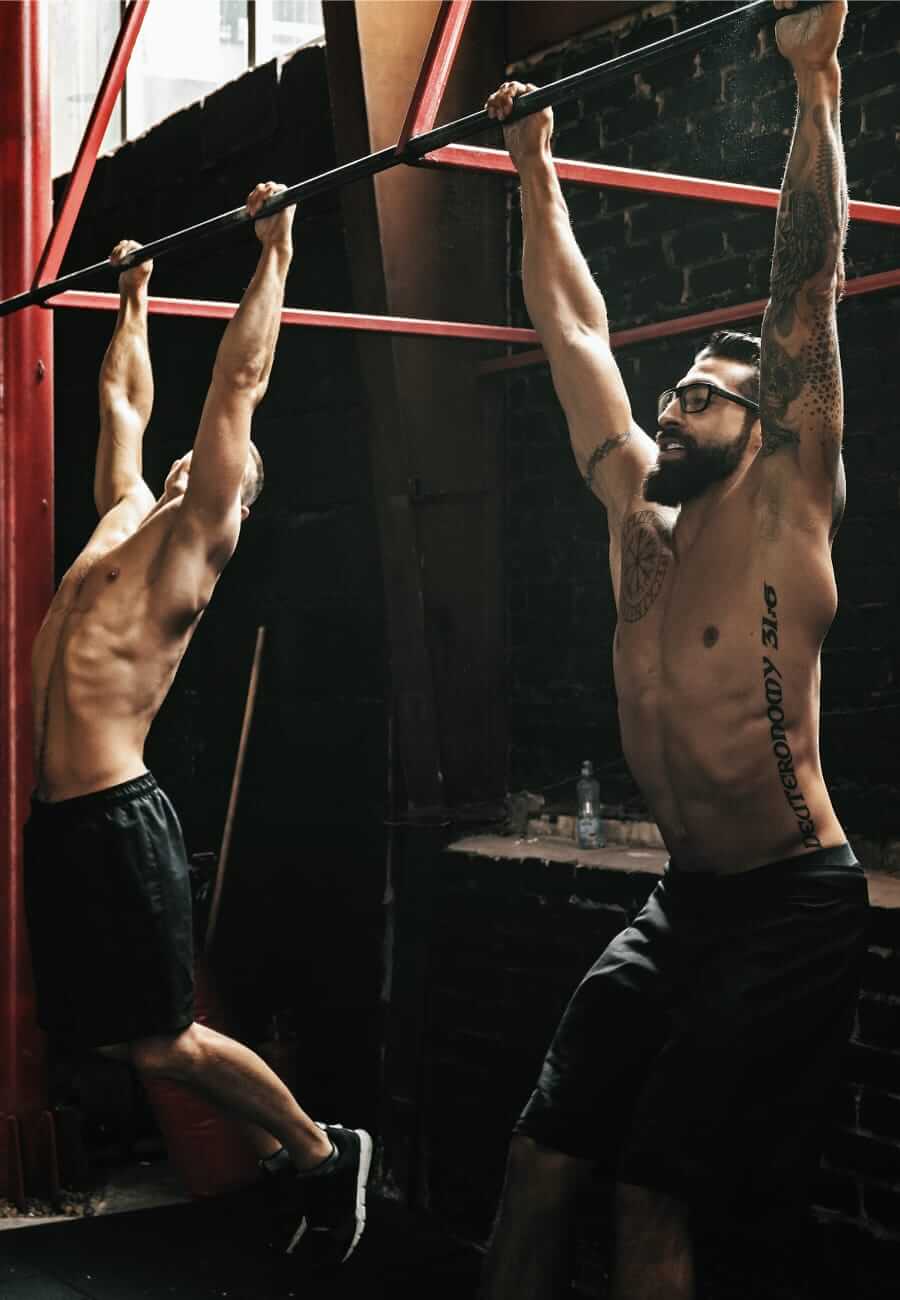
Pull-Ups
vs. Chin-Ups
Which essential exercise provides more benefits?
It’s a common debate among gym-goers. Which is better for your body: the pull-up or the chin-up? And if you were to ask five different people, you'd likely get five different answers. Which is probably why a study in the Journal of Strength and Conditioning Research took a scientific approach and measured muscle signals during both exercises.
What they found was that while similar, the chin-up more heavily worked the chest and upper arms, while the pull-up focused on your back's lats and traps. So really, it's less about one being better or worse. They simply provide different benefits. But for a balanced and strong upper body, you want to add both of these to your workout routine. After all, in a GQ magazine survey of what muscles women find the sexiest, the answers focused heavily on the arms, shoulders and back.

“Pull-up” and “chin-up” hand positions.
They're humble exercises, but that doesn't mean they're easy. Both the chin-up and the pull-up are complex body-weight moves that offer a broader range of motion and bigger returns than something you'd get from a standard bicep curl or working a weight machine.
It's common for people to struggle with both moves—especially when starting out. Pull-ups (done with both hands in an overhand grip slightly wider than shoulder-width apart), prove to be the most difficult. The wide grip isolates your lats, taking away much of the emphasis from the biceps. Chin-ups (the underhand alternative), tend to come faster because you're using your arm muscles that are pretty strong already. Both are exercises you want to perform early in your workout so you have the energy and strength to give them the energy and form needed to do them properly.
Build Up Your Strength
1
If you can’t do more than one pull-up, start by simply hanging on the bar for 30 to 60 seconds. Trainer Melody Schoenfeld of Flawless Fitness suggests simply hanging on the bar to get used to holding your bodyweight and building grip strength. “A strong grip leads to a strong upper body.”
2
Use pyramid training to increase your strength and endurance. You start out light, working towards a higher repetition and then work back down to one rep. You rest for 15 to 60 seconds (as needed) in between sets.
3
A sample pyramid progression: 1, 2, 3, 4, 5, 4, 3, 2, 1 = 25 total pull-ups or chin-ups (with rests between each set).
651
The number of consecutive pull ups achieved by Kenta Adachi of Japan, who set a new Guinness World Record last year.






